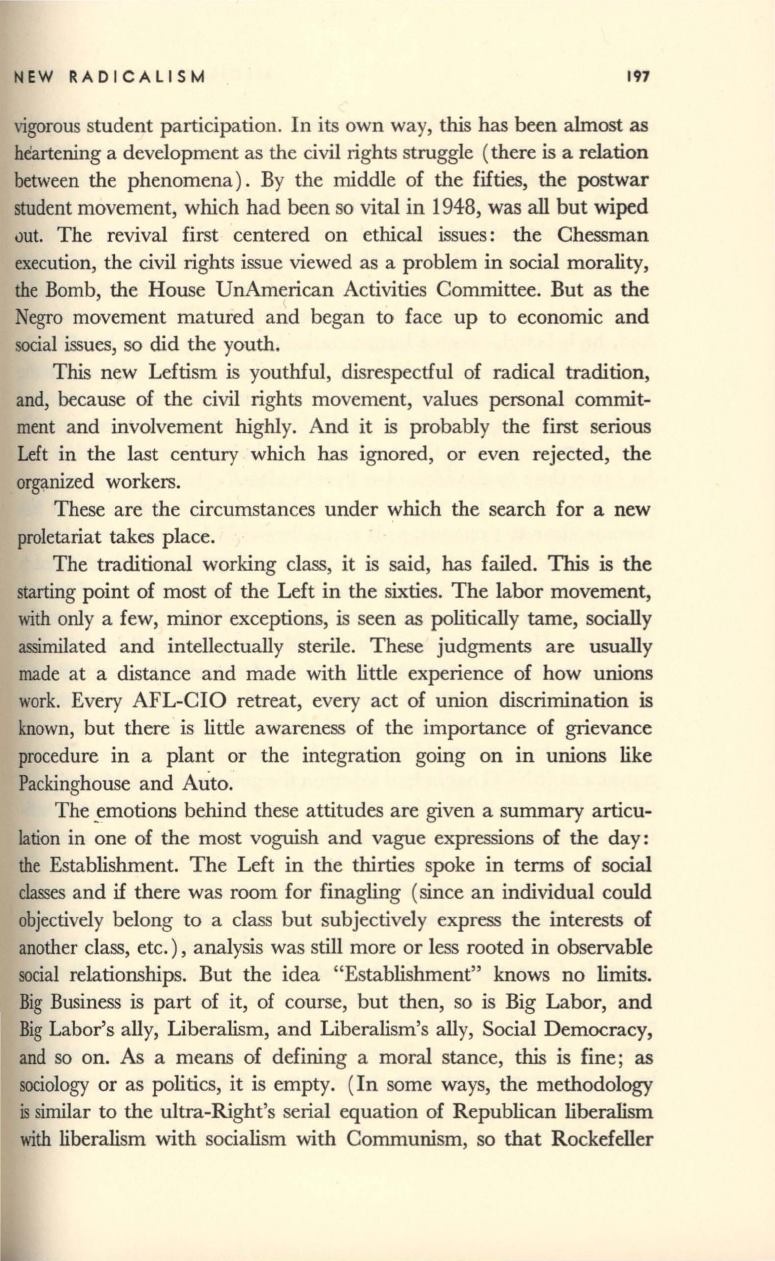
NEW RADICALISM
197
vigorous student participation. In its own way, this has been almost as
heartening a development as the civil rights struggle (there is a relation
between the phenomena). By the middle of the fifties, the postwar
student movement, which had been so vital in 1948, was all but wiped
.Jut. The revival first centered on ethical issues: the Chessman
execution, the civil rights issue viewed as a problem in social morality,
the Bomb, the House UnAmerican Activities Committee. But as the
Negro movement matured and began to face up to economic and
social issues, so did the youth.
This new Leftism is youthful, disrespectful of radical tradition,
and, because of the civil rights movement, values personal commit–
ment and involvement highly. And it is probably the first serious
Left in the last century which has ignored, or even rejected, the
or~zed
workers.
These are the circumstances under which the search for a new
proletariat takes place.
The traditional working class,
it
is said, has failed. This is the
starting point of most of the Left in the sixties. The labor movement,
with only a few, minor exceptions, is seen as politically tame, socially
assimilated and intellectually sterile. These judgments are usually
made at a distance and made with little experience of how unions
work. Every AFL-CIO retreat, every act of union discrimination is
known, but there is little awareness of the importance of grievance
procedure in a plant or the integration going on in unions like
Packinghouse and Auto.
The .emotions behind these attitudes are given a summary articu–
lation in one of the most voguish and vague expressions of the day:
the Establishment. The Left in the thirties spoke in terms of social
classes and if there was room for finagling (since an individual could
objectively belong to a
class
but subjectively express the interests of
another class, etc.), analysis was still more or less rooted in observable
social relationships. But the idea "Establishment" knows no limits.
Big Business is part of it, of course, but then, so is Big Labor, and
Big Labor's ally, Liberalism, and Liberalism's ally, Social Democracy,
and so on.
As
a means of defining a moral stance,
this
is fine; as
sociology or as politics, it is empty. (In some ways, the methodology
is
similar to the ultra-Right's serial equation of Republican liberalism
with liberalism with socialism with Communism, so that Rockefeller


